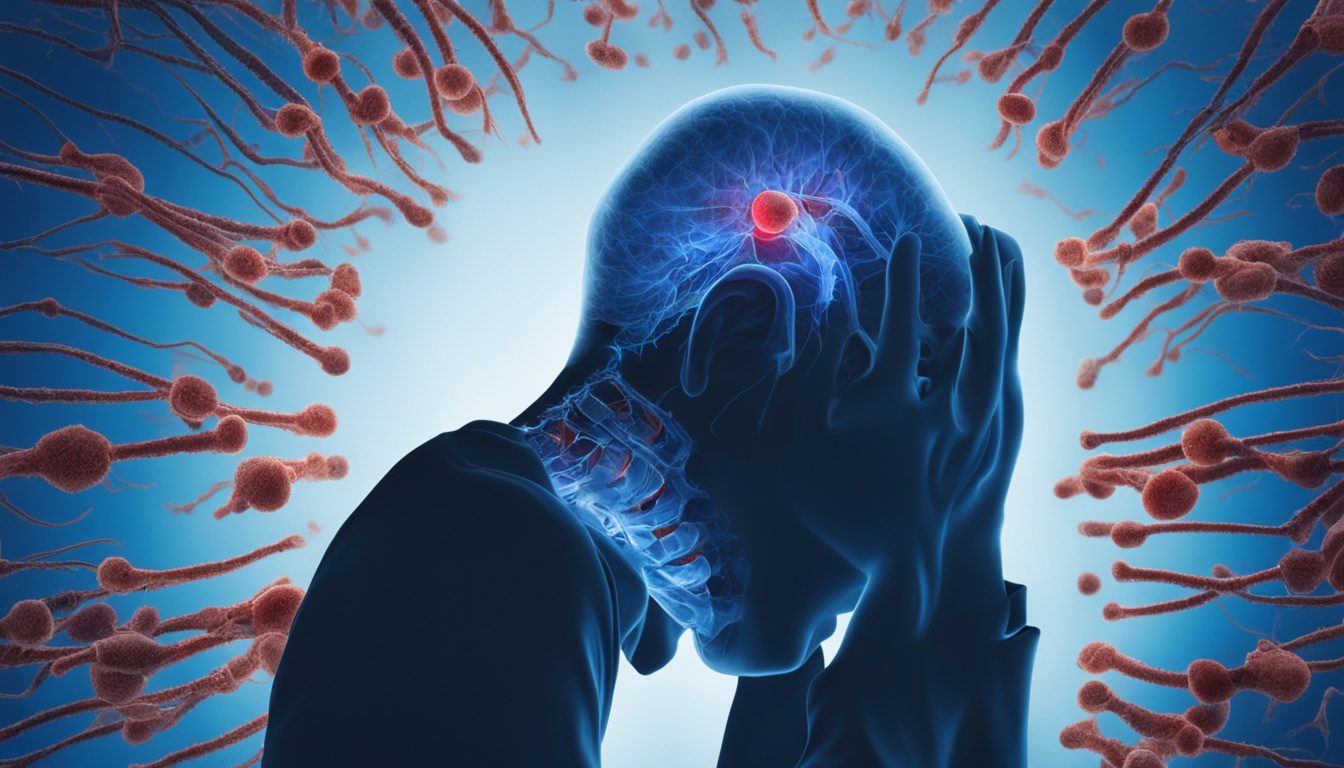Spinal headaches are a serious issue known to cause intense suffering. They’re mostly seen after certain medical procedures like lumbar puncture. These headaches come about when cerebrospinal fluid leaks out through a hole in the dura. This can result in a persistent, dull pain that feels like a throb, getting worse with specific movements. Along with this pain, people might also feel dizzy, have ringing in their ears, see things unclearly, and feel like they’re going to throw up. Knowing the causes, how to diagnose, and what treatments are available is key to reducing this discomfort and bettering one’s life.
Many things can make someone more likely to get spinal headaches. This includes being young, particularly if you’re a woman, and if you’ve often had bad headaches. A past episode of a spinal headache also raises your chances for another one. Recognizing these risk factors underlines how vital it is to stay on top of your health and get the right advice from health professionals.
Key Takeaways:
- Spinal headaches occur after procedures like lumbar puncture or spinal anesthesia.
- Leakage of cerebrospinal fluid through dural perforation leads to dull, throbbing pain.
- Additional symptoms may include dizziness, tinnitus, blurred vision, and nausea.
- Risk factors include being aged 18 to 30, female, and having a history of chronic headaches.
- Diagnosis is based on typical symptoms, and treatment options include rest, pain medication, and stem cell therapy in severe cases.
Spinal Headache: Overview and Causes
Spinal headaches often happen after certain medical procedures. These include a lumbar puncture or spinal anesthesia. These procedures mean poking through the dura mater, a membrane around the spinal cord.
This is done to get to cerebrospinal fluid for health checks or treatments. If there’s a tiny hole in the dura, cerebrospinal fluid might leak. This leak can lead to a spinal headache.
A spinal headache feels like a throbbing pain in your head and neck. The pain can be mild or quite severe. It might last hours or even days.
Doctors look at your health history, any procedures you had, and if the pain gets worse when changing position. Sometimes, they do tests like imaging to be sure.
Spinal headaches can be more likely if you’re young, female, pregnant, or have had headaches before. The key issue is the leak of cerebrospinal fluid from the hole in the dura.
Often, spinal headaches go away by themselves. But, if they’re really bad or stick around, you might need treatment. This could be rest, pain meds, or things to help the hole in the dura heal.
Causes of Spinal Headaches
The main reason for a spinal headache is poking a hole in the dura. This happens in procedures like lumbar puncture or spinal anesthesia. A needle is put into the spine to reach the cerebrospinal fluid.
A lumbar puncture puts a small hole in the dura to test the fluid. Spinal anesthesia uses injections to make parts of the body numb. If the dura gets accidentally hole-punched, fluid can leak out.
This leaking fluid changes the pressure around your brain and spine. It’s what causes the headache.
Not every person who gets a lumbar puncture or spinal anesthesia will get a spinal headache. But, certain factors like age, gender, being pregnant, or having chronic headaches raise the risk.
Sometimes, spinal headaches happen because of other spinal procedures. This includes surgeries or placing catheters. The dura can get a hole from mechanical issues or foreign objects in the spinal canal.
Stem Cell Therapy for Spinal Headache Relief
Spinal headaches cause a lot of pain and make life hard. They happen when a hole in the covering of the brain lets fluid out. Right now, we don’t have a cure for these headaches. But, using stem cells might make things better for those who suffer from them. This could improve their life a lot.
Mesenchymal stem cells (MSCs) are a key part of this new treatment. They can do many things, like help fix injuries in the spine, calm down swelling, and change how the immune system responds. These abilities make them a good choice for trying to treat spinal headaches.
Studies with animals have given us hope. They show that MSCs can help the spine get better and work well again after an injury. Stem cell therapy aims to fix the causes of these headaches. It also tries to get rid of the symptoms that make life tough for those who have them.
Even though we still need to learn more, stem cell therapy looks very promising. It could be a big help for people with spinal headaches. Experts are working hard to understand how stem cells can best be used for this. They’re looking at ways to make the treatment more specific for each patient. This could mean better results for everyone dealing with spinal headaches.

